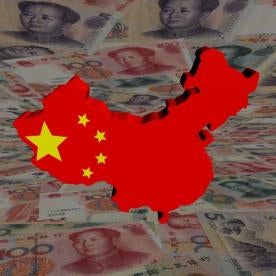In April 2020, the Supreme Court of the People’s Republic of China published the amended draft Provisions concerning interpretation of certain norms of the patent law and its implementing regulations about the administrative litigation of patent rejections and invalidations.[1] The Provisions offer the Supreme People’s Court the opportunity to address new issues and matters not expressly regulated by the patent law. In this second draft of the provisions, as discussed in more detail below, the Court addresses several matters concerning the administrative litigation of patent re-examination and invalidation claims and proceedings. Once the public, mostly including private in-house practitioners and law firms, has provided comments, the Supreme Court will revise the text and adopt the final and binding version.
Key Features of the 2020 Provisions
The 2020 Provisions contain an array of interpretations and guidelines for administrative judges involved in re-examination and invalidation appeals, and cover many different types of issues and patent rights, from inventions to designs.
Several articles in the 2020 Provisions deal with the interpretation of Article 26 of the Patent Law, concerning admissibility requirements and standards for the description and the drawing sections of the patent application. For example, the 2020 Provisions address the case of fraudulent and fabricated descriptions and drawings. Other articles in the 2020 Provisions deal with other cases, including (i) the case in which descriptions and drawings are not clear or define multiple subject types at the same time, (ii) the case in which the meaning of the technical features in the claims cannot be reasonably determined or that in which there is an obvious contradiction between technical characteristics that cannot be reasonably explained, and (iii) the case in which contents recorded in the description and the drawings contradict each other.
Yet other articles in the draft of the 2020 Provisions deal with the definition of what belongs to prior art. In particular, Article 13 of the 2020 Provisions sets forth that the background technology described in the specifications shall not be regarded as the prior art, unless there is evidence that it was known to the public at home and abroad before the filing date.
Other articles in the 2020 Provisions concern general matters. For example, there is one defining the scope of the appeal claims, by stating that they are to be determined according to the plaintiff’s specific appeal demand and reasons. Also for example, there is one teaching the judges how to deal with obvious errors in the grammar, text, numbers, punctuation, graphics, symbols, etc. in the claims, the description and the drawings. A whole section of the 2020 Provisions is dedicated to design patents and the mental process judges have to carry out to determine the designer’s freedom and assess the impact of differences on the overall visual effect of the patented design.
Pharmaceutical Experiments
Of particular interest to US pharmaceutical companies is Article 11 of the 2020 Provisions.
Article 11 provides that when a patent applicant or a patent owner submits experimental data with respect to a pharmaceutical patent after the date of application, the People’s Court shall examine this new evidence. Such data may be provided to show that the technical effects provided in the description have been adequately disclosed, and could be confirmed by the person skilled in the art on the date of application in accordance with the illustrative statements, annexed graphs and common knowledge. Such data may be provided to show that the patent has technical effects different from those in the comparative documents, and these technical effects could be directly and undoubtedly confirmed by the person skilled in the art on the date of application on the basis of the publicly available contents of patent application documents. In the latter case, the Provisions further state that the People’s Court must examine the application.
These provisions are being proposed by the Supreme People’s Court to implement specific obligations China assumed with the signature of the Economic and Trade Agreement (with the US) on January 15, 2020. The Economic and Trade Agreement provides in Art. 1.10 of Section C that China shall undertake to permit pharmaceutical patent applicants to rely on supplemental data to satisfy relevant requirements for patentability, including sufficiency of disclosure and inventive step, during patent examination proceedings, patent review proceedings, and judicial proceedings. Article 11 of the 2020 Provisions would satisfy this obligation in relation to administrative judicial proceedings concerning the re-examination and invalidation of pharmaceutical patents in China.
These provisions, if adopted, could facilitate the burden of pharmaceutical applicants to meet strict patentability requirements and accelerate the time for filing patents, without the need to wait for still pending experimental activities. However, there are some formal hurdles to meet in order to introduce such evidence. Article 12 of the 2020 Provisions adds that if a party submits experimental data, the court may require the party to prove the source and formation process of the experimental data. This includes the experimental materials and their sources, experimental steps, conditions, environment or parameters, as well as the personnel and institutions that completed the experiment, as well as factors that affect its authenticity, relevance and proof. If the parties dispute the authenticity of the experimental data, the people’s court may entrust an institution with corresponding qualifications or a third party recognized by the parties to test or verify the experimental data.
As another potential hurdle, the implementation of Article 12 may require pharmaceutical applicants and patentees to disclose data and information that constitute trade secrets – depending on the threshold established by the Chinese judges when reviewing the required proof of authenticity and the depth of information required. Interestingly, the Economic and Trade Agreement addressed this issue, at least in part. Article 1.9 of Section B provides that, to further strengthen the protection of trade secrets, as well as better encourage various enterprises to innovate, China shall prohibit the unauthorized disclosure of undisclosed information, trade secrets, or confidential business information by government personnel or third party experts or advisors in any criminal, civil, administrative, or regulatory proceedings. According to the Economic and Trade Agreement, China undertakes to require administrative agencies and other authorities at all levels to limit requests for information to no more than necessary for the legitimate exercise of investigative or regulatory authority.
Conclusions
The US expects that Article 12 of the 2020 Provisions will be implemented in accordance to the thresholds established in the Economic and Trade Agreement. However, given the volatility of the US-China relations and the difficulty for the US to enforce such obligations, the interpretation and application of Articles 11 and 12 of the 2020 Provisions may present many challenges. We will need to wait and see whether and when the State Council of China will decide to provide more guidance by implementing legislation that will concretely implement the Economic and Trade Agreement.
[1] The 2020 Provisions are entitled, “Provisions on Several Issues Concerning the Trial of Administrative Cases Concerning Patent Authorization and Confirmation of Power (I).”




 i
i


